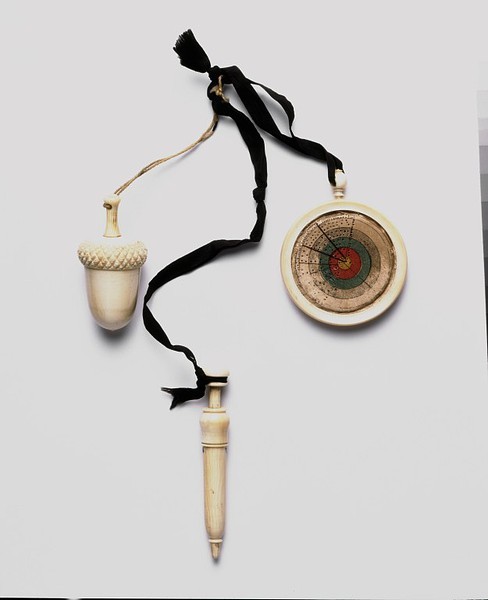
Lady’s archery score kit
- Date:
1850-1860 (made)
- Artist/Maker:
Unknown (production)
- Materials and Techniques:
Ivory, silk ribbon, printed paper and grease (mutton fat and tallow)
This is a lady’s scoring kit for archery. These usually hung from a lady archer’s belt together with a quiver, a spare string, and sometimes a purse containing shillings. Three golds (arrows in the centre) entitled a competitor to receive a shilling from each opponent.
The kit has three parts: The acorn-shaped cup or pot contained grease (a mixture of mutton fat and tallow) which help the finger protectors or shooting glove slide more easily off the bowstring. The pricker is the tubular object with a sharp pointed stiletto used for marking scores onto the card disc which holds a circular replaceable printed paper bulls-eye card with circles in gold, red, white, black and blue. Players scored nine for gold, seven for red, five for blue three for black and one for white.
Archery was a popular pastime in the 19th century. Queen Victoria was an enthusiastic player. It was one of the few sports open to middle-class ladies and provided opportunities for them to mix socially with the opposite sex without a chaperone. This method of scoring archery goes back at least to the 1830s. Scoring in this way ceased at public archery meetings in 1872 and was succeeded by score books and pencils.
The Victoria and Albert Museum
No comments:
Post a Comment